
Would you believe we think this is the first country we've encountered anything other than "Stop" on a stop sign.
There are probably others. But we've become conditioned.

Subtly different to Greece where solar electric panels in farms were prevalent.
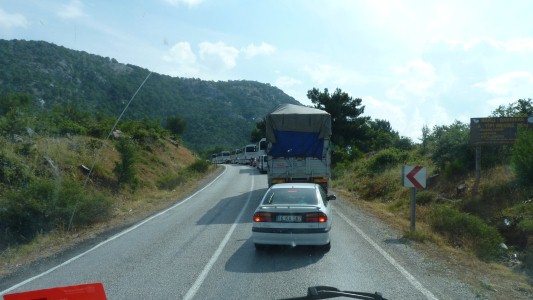
This queue was to let some oversize vehicles coming the other way park and let us past.
The row of buses in front had a police escort and we'd let them pass a few km earlier.

Good quality fruit and veggies available.

Being perverse we went to the Red Basilica first.
Closed.
It used to be the Serapis Temple (Egyptian Gods) around 200 - 100 BC but became a Basilica in Byzantine times.
The two domed buildings (either side) are described as symmetrical and contain images of the Egyptian Gods!
The river Selinus flows underneath (196m tunnels).
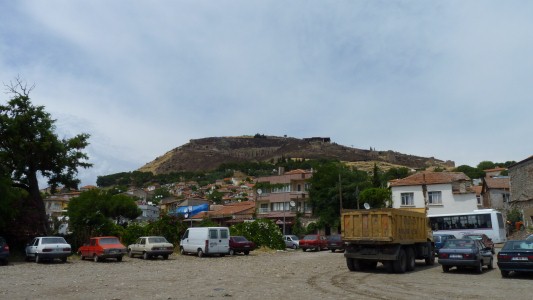

Straight to the top.

Of course.
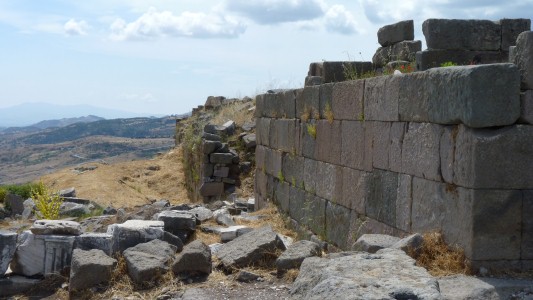
Made bigger in 282 - 263 BC by Philetairos.
Bigger again by Eumenes II in 197 - 157 BC including the Altar of Zeus.
And the Romans extended on to the plain. A city of 150,000 people.
This is the outer wall.
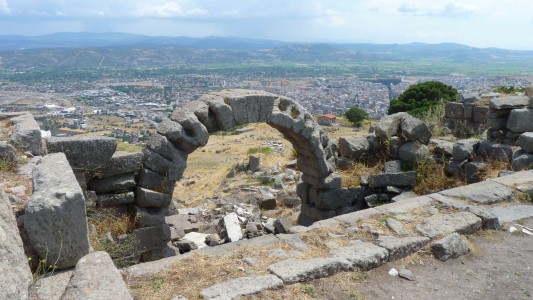
We were a bit baffled. Entering from the other side it led nowhere.
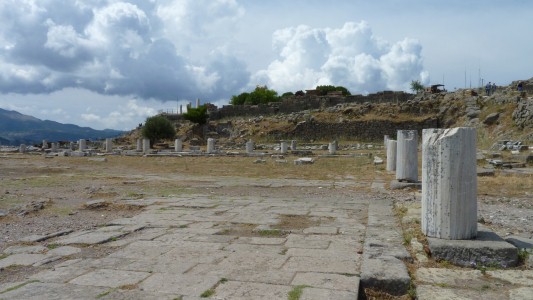
The colonnade around large square. Temple of Zeus in the middle (off picture to left).
There's also the first mention of a library.

And the Temple of Dionysius below.
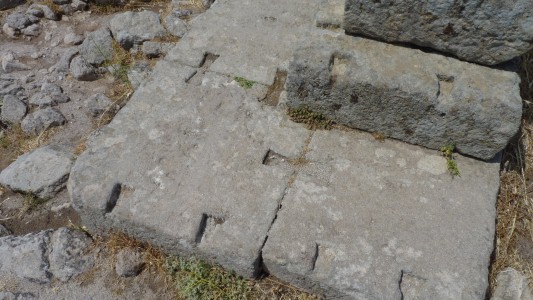
Our keen eyes spot a mechanism for joining stonework.
Must have had a few things fall down early so new techniques to strengthen introduced!
A long time (SE Asia we think) since we saw similar.
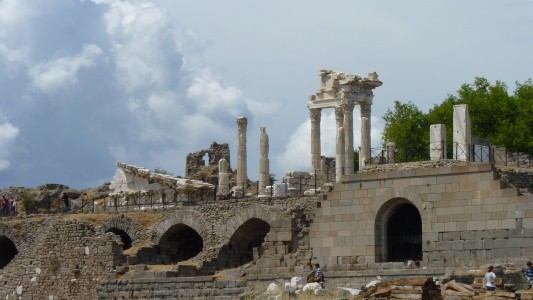

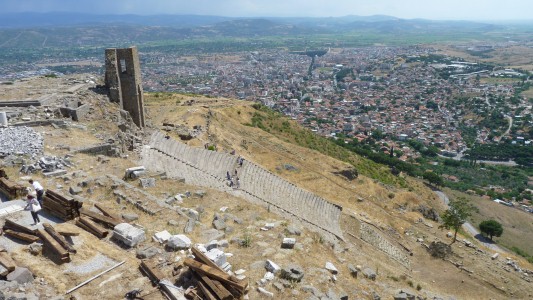
The theatre steps were just this side of the tall square bit (technical term for something we didn't recognise).

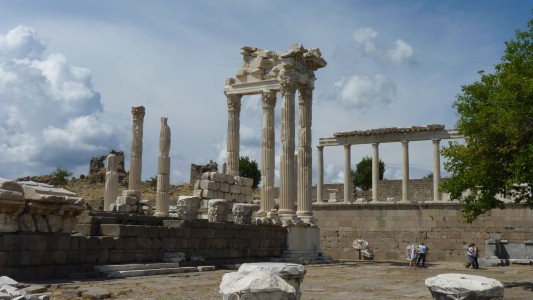
The statuary has been removed to museums.
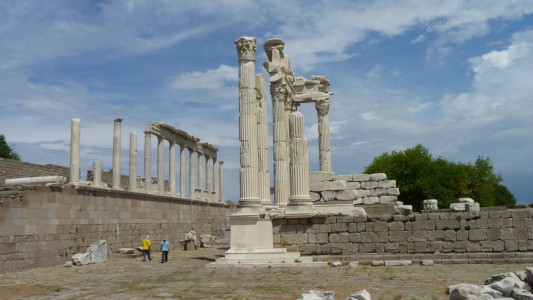
Something important to see ...



The akropolis was earlier supplied by a terracotta pipeline.
45 km, 240,000 sections of pipe, pressure to opposite the citadel then a lead pipeline capable of pressure of 20 atmospheres (lots).
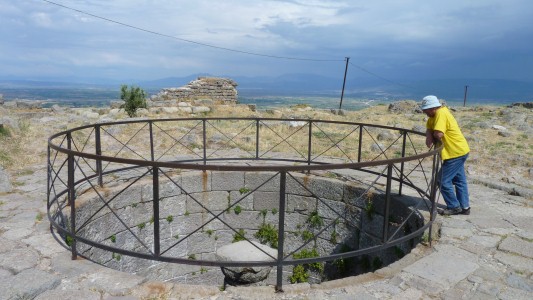
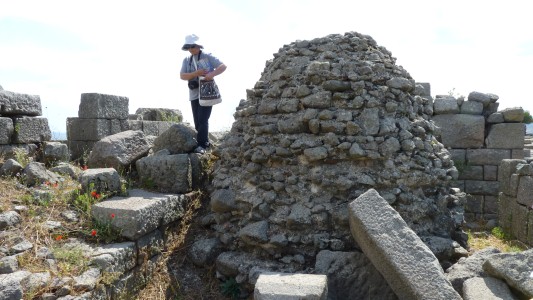
Not sure what for as we couldn't find the exit.